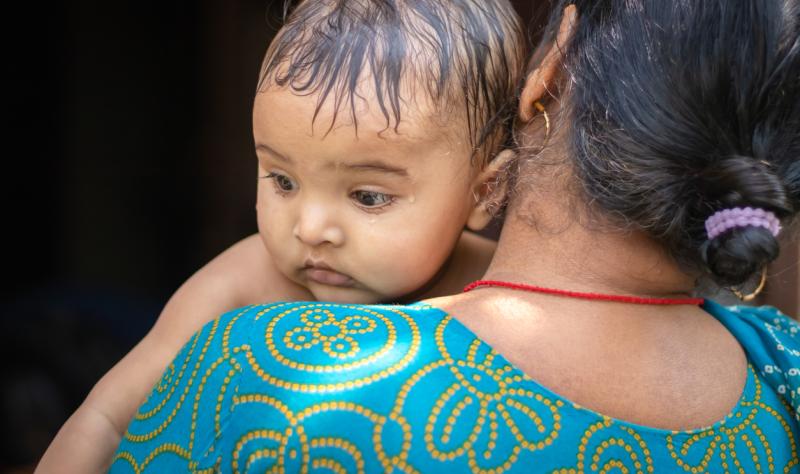Widescale distribution of malaria rapid diagnostic tests (RDTs) in Africa is associated with better fever management and modestly improved survival in children under 5 years, but also with increased antibiotic use, researchers reported this week in JAMA.
From 2010 through 2021, 82% of the 3.5 billion malaria RDTs sold have been distributed in sub-Saharan Africa, where malaria is a leading cause of mortality in children under 5. Widespread distribution of malaria RDTs, along with a 2010 World Health Organization recommendation to shift away from presumptive treatment of fever with antimalarial drugs toward parasitologic confirmation of malaria, has helped push the rate of diagnostic testing for suspected malaria—which has symptoms that overlap with many other bacterial and viral illnesses—from 26% to above 90% across the continent.
But has use of malaria RDTs improved management of fever in children under 5? That’s the question that researchers from Harvard University, the Swiss Tropical and Public Health Institute, and the University of Basel wanted to answer.
“Although evidence suggests that increases in the use of malaria RDTs were associated with improved and targeted use of antimalarial drugs in individual settings, the effect of this large increase in malaria testing capacity on medication use and mortality among children younger than 5 years of age across sub-Saharan African countries is unknown,” they wrote.
Increased blood testing, antimalarial drug use
To evaluate the association between the distribution of malaria RDTs and management of fever and mortality in children under 5 in the region, the researchers constructed and analyzed a novel dataset linking malaria RDT distribution to 165 nationally representative household surveys collected from 35 sub-Saharan countries with mortality data from 2000 to 2019.
The distribution of malaria RDTs increased steeply from 2006 to 2019, with a cumulative distribution of 1.5 billion across the 35 countries by 2019. Distribution was highest after 2013 and in countries with a high prevalence of malaria.
The fever sample included 256,292 children (mean age, 2.4 years; 49% female), and the mortality sample 1,317,866 children. In addition to fever, 52% of children had a cough and 34% had diarrhea.
Regression analysis showed that each additional malaria RDT distributed per child under 5 was associated with an increase of 3.5 percentage points (95% confidence interval [CI], 3.2 to 3.8) in blood testing, an increase of 1.5 percentage points in use of antimalarial drugs (95% CI, 1.2 to 1.8), an increase of 0.4 percentage points in antibiotic use (95% CI, 0.1 to 0.6), and a decrease of 0.4 percentage points in the use of treatment for symptoms (95% CI, 0.1 to 0.8). A reduction in child mortality of 0.34 deaths per 1,000 child-years (95% CI, 0.15 to 0.52) per each additional malaria RDT distributed was also observed.
The effects of malaria RDT distribution on medication use and child mortality varied across prevalence settings for malaria, with survival improvements observed only in areas that had a high prevalence of malaria. In areas with low malaria prevalence, use of malaria RDTs shifted treatment away from antimalarials and toward the use of antibiotics, which was already substantial. Overall, 25% of children with fever received antibiotics.
Concerns about increased antibiotic use
The study authors say that while the findings indicate that distribution and use of malaria RDTs aided in discerning the cause of illness and improving both child health and survival, the high rate of antibiotic use they found “raises concerns about the potential spillover effects of large increases in malaria diagnostic testing causing increases in antibiotic use, because most non–malarial pediatric febrile illness is viral in both settings of low and high prevalence of malaria.”
“These findings underscore the importance of comprehensive approaches to pediatric febrile illness management to ensure appropriate antibiotic use for non–malarial fever episodes (eg, through the development of better point-of-care tests and clinical algorithms),” they wrote.
In an accompanying editorial, experts from Duke University and Moi University College of Health Sciences in Kenya say the challenge of identifying the appropriate treatment for fever “points to the necessity of incorporating malaria RDTs into a system of care that can rightly place malaria RDT results into a more comprehensive febrile illness management plan.”
They add, “Although there is concern that malaria RDT use could accelerate the spread of antibiotic resistance, it is possible that some of the increase in antibiotic use is warranted.”







